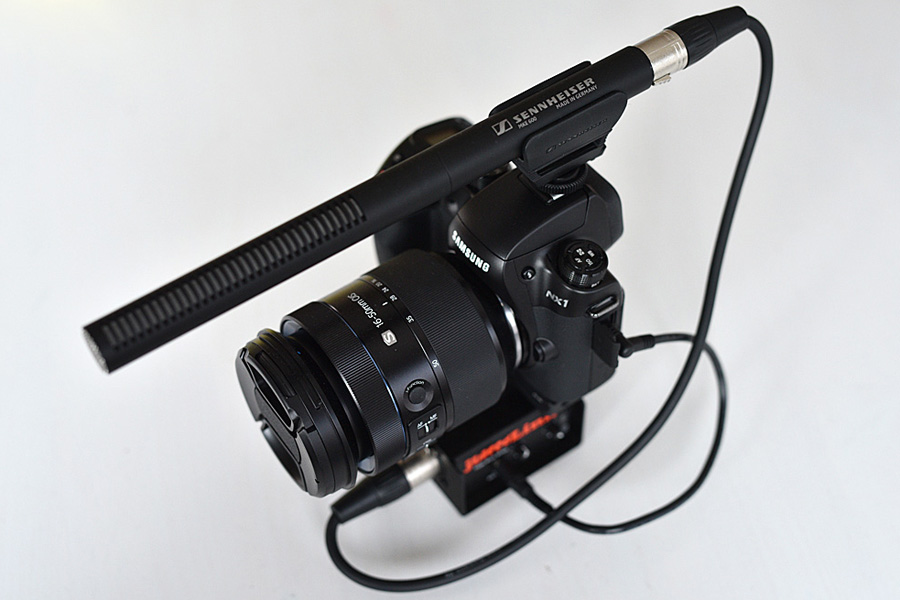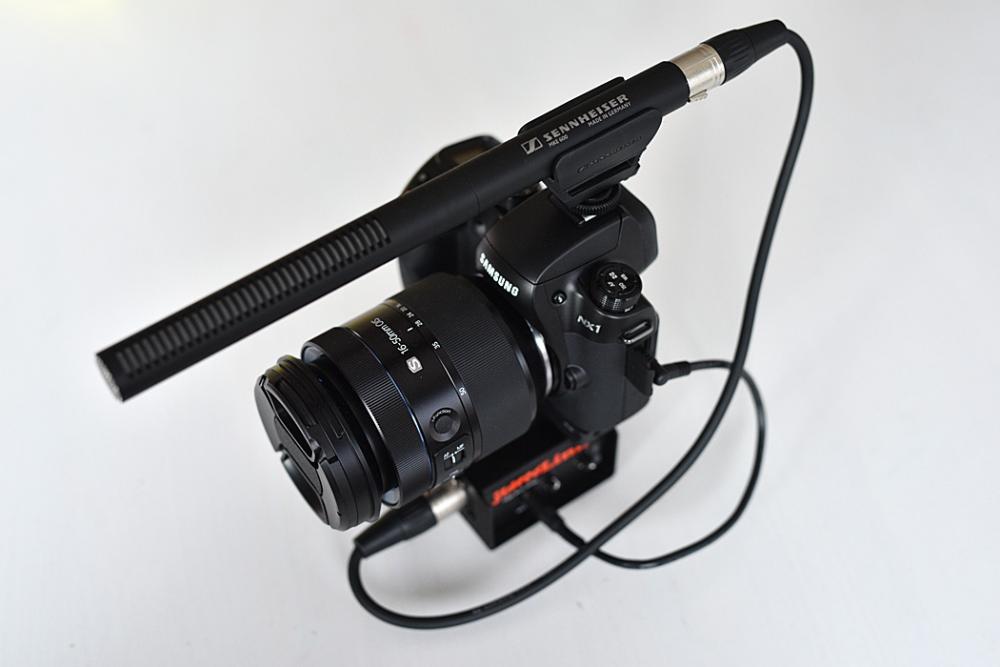
Mars
Members-
Posts
55 -
Joined
-
Last visited
Content Type
Profiles
Forums
Articles
Everything posted by Mars
-
The new Sigma-Art lenses. Currently the 50mm/1.4 (i.e. for my little girl), true Zeiss-quality. Apart from that of course the 18-35mm/1.8 on the D7100 and NX1. If only it wasn't that huge and heavy... The 35mm/1.4 on the D810 is no wimp either.
-
Black & white probably helped as well. The interview was done with F35 and A7s? The water flume was the RX100IV in a case? Very well done...
-
But for rigged cameras your solution with a proper recorder offers the best results. Yes, changing the focus works only from above, your hand is between the lens and the mic. So I'm currently thinking about getting one of these http://www.ebay.de/itm/Varavon-ARMOR-II-NX1-PRO-CAGE-/281932011610?hash=item41a475185a:g:juQAAOSwll1Wuwbb ... but haven't made up my mind yet.
-
If you want to see how this looks like: Would be interesting to see if the Sony solution is better... Btw, does it really "bypass" amp gain in the camera? On the NX1 I set mic level to 1 or 2, auto mic control off and the gain on the juiced link to max. Works quite well if your sound source not too far away. For the attachment underneath I'm using a quick release mounting plate.
-
Yes, much better than any in camera solution obviously. As fuzzy writes you need to be close enough though, otherwise Sennheiser g3 lavalier is the way to go. I also have the Sony PCM-D100 which is probably better than the H1. The juiced link solution is not much worse than the Sony.
-
All DSLRs are more or less noisy. You could use this: http://www.juicedlink.com/collections/preamp-selection/products/riggy-micro-rm222 and a mic of your choice, i.e. http://en-uk.sennheiser.com/shotgun-microphone-camera-camcorder-video-mke-600
-
-
It seems they haven't rolled out that "feature" to everybody yet... https://vimeo.com/help/faq/watching-videos/playback-issues#what-is-adaptive-streaming-and-how-does-it-impact-my-videos In theory this sounds good... "What is adaptive streaming? It means that viewers will no longer need to choose the quality of the video they're viewing. Instead, the player will intelligently choose the highest quality possible based on the viewer's network connection, graphics processing ability, and other factors." "Viewers won't have to worry about the HD toggle anymore. Over the course of viewing a video, the quality will change (hence the term "adaptive streaming") to accommodate any changes in network connection or graphics processing. We'll make sure they always receive the highest quality video possible, whether that's 720p, 1080p, or even 4K." In practice it's them who decide which quality arrives at your viewers displays. And in doubt, i.e. if it is poorly implemented, the quality will be lower than necessary. The uploader is not in control any more. Would be better if the uploader could choose between Auto and a specific default quality he thinks is appropriate.
-
Anyone tried Handbrake? https://handbrake.fr/news.php?article=35
-
Oh dear - thanks... Yes, I see: over the web there are many opinions and posts on the whole 16-235/0-255 thing. One (of the many) basic explanations (probably well known to everybody here anyway): http://referencehometheater.com/2014/commentary/rgb-full-vs-limited/ In this blog the main take away message seems to be that the information used is the same for both settings and that only the information how to display the image is conveyed to the output-application (if I understand it right): http://blog.josephmoore.name/2014/10/29/the-three-most-misunderstood-gh4-settings/ Here at eoshd, Andrew suggests 16-235 (the above link contained there as well): http://www.eoshd.com/comments/topic/9218-nx1-16-235-vs-0-255/ http://www.eoshd.com/comments/topic/8522-samsung-nx1-h265-workflow-suggestions/ If 0-255 using i.e. rocky mountains movie converter (which is equivalent to ffmpeg) leads to clipping then I think I'd rather follow his advice...
-
Hmm, maybe depends on your workflow and the transcoding tool: http://www.divergentmedia.com/blog/samsung-nx1-h265-luminance-ranges/ "If your footage is targeting a color correction pass, 0-255 is a good option. But if you’re using an NX1 to shoot video that you want to edit in a more traditional manner, stick to the 16-235 setting. It’s not worse, it’s just intended for different workflows, and is the right mode for most users."
-
Sorry for the dumb question but... why is 16-235 an option at all? Mabe it's naive but isn't less information always worse than more information... (you can limit your data in post if necessary)
-
+1 including some €€€ as donation
-
No, the logic is different: As variable ND filters work in a similar way as very strong polarizers, of course they inherit all their drawbacks as well. Regardless of how much "high-quality" they are. Since polarizers show uneven polarization with wide lenses, it´s quite clear that two filters stacked on each other can lead to quite bad results on wide lenses. This is due to physics and has nothing to do with the quality of the filters. See i.e. here: https://luminous-landscape.com/polarizers/ http://havecamerawilltravel.com/photographer/polarizing-filter-wideangle-lens ...and many more on the web. So my personal conclusion is to get one variable ND filter for work with "normal" lenses and a set of fixed filters for wide shots.
-
Hm, i was also looking for a viable ND solution but found that: http://havecamerawilltravel.com/photographer/tiffen-variable-filter-field-test "problem is that the filter makes the image very soft as well as introducing new chromatic aberration. And it’s not the kind of softness that some careful sharpening can overcome. In short, it’s nowhere near the quality I need for images for clients or publication."
-
Ok, interesting. For stills (in RAW) you rather underexpose to avoid blown out highlights and brighten up even 4-5 stops in post. Possible because the dark parts of the picture retain enough practically noise-free information nowadays... For video, since the engine can and does compress dark parts more, "uncompressing" them for viewing can lead to artifacts or lost colour. Thx. But I understand right that monochrome areas in the picture are not compressed more heavily? Asking because using lenses more open could lead to bigger out-of-focus areas which are more evenly coloured...
-
Is it really that way round? I'm asking because what I've learned most recently from stills photographers I value quite high is that you nowadays - in the time of ISO-less sensors used by Nikon - may safely underexpose by, say, even up to 5 stops and get perfect pictures. Would be interesting to understand why for video this doesn't apply any more. Is it really just the codec and its compression? See i.e. here: http://www.dslr-forum.de/showpost.php?p=12645063&postcount=54 Left is the unprocessed picture from the D810, 4 stops difference.
-
My fav lens on Nikon cameras at the longer end has always been the old AF-D 180mm ED. Not to heavy, really really nice rendering, gains a bit when stopping down to f4. Highly recommended. Have also the push-pull 80-200 you mention and agree with your assessment - used it recently a bit less though, especially since the 70-200/4 VR found its way into my bag. But on the NX1 should be certainly a good choice if you need the flexibility.
-
Thanks for the advice, very much appreciated. Will get an NX1 next week and thinking about the rather pricey Novoflex adapter as I'm heavily invested into Nikon glass of all sorts. But probably getting one of those cheap China adapters as backup is a sensible insurance...
-
Nikon D5 versus Canon 1D C for cinematic 4K video - which wins?
Mars replied to Andrew - EOSHD's topic in Cameras
Don't you expect the AF and high ISO to be better? Kind regards, Martin -
Yes but of course not if quality is concerned. That's why I absolutely love my Sony RX1R for stills - only 35mm but gorgeous files. If the D810 video quality existed in the same body I would probably buy it on the spot.




